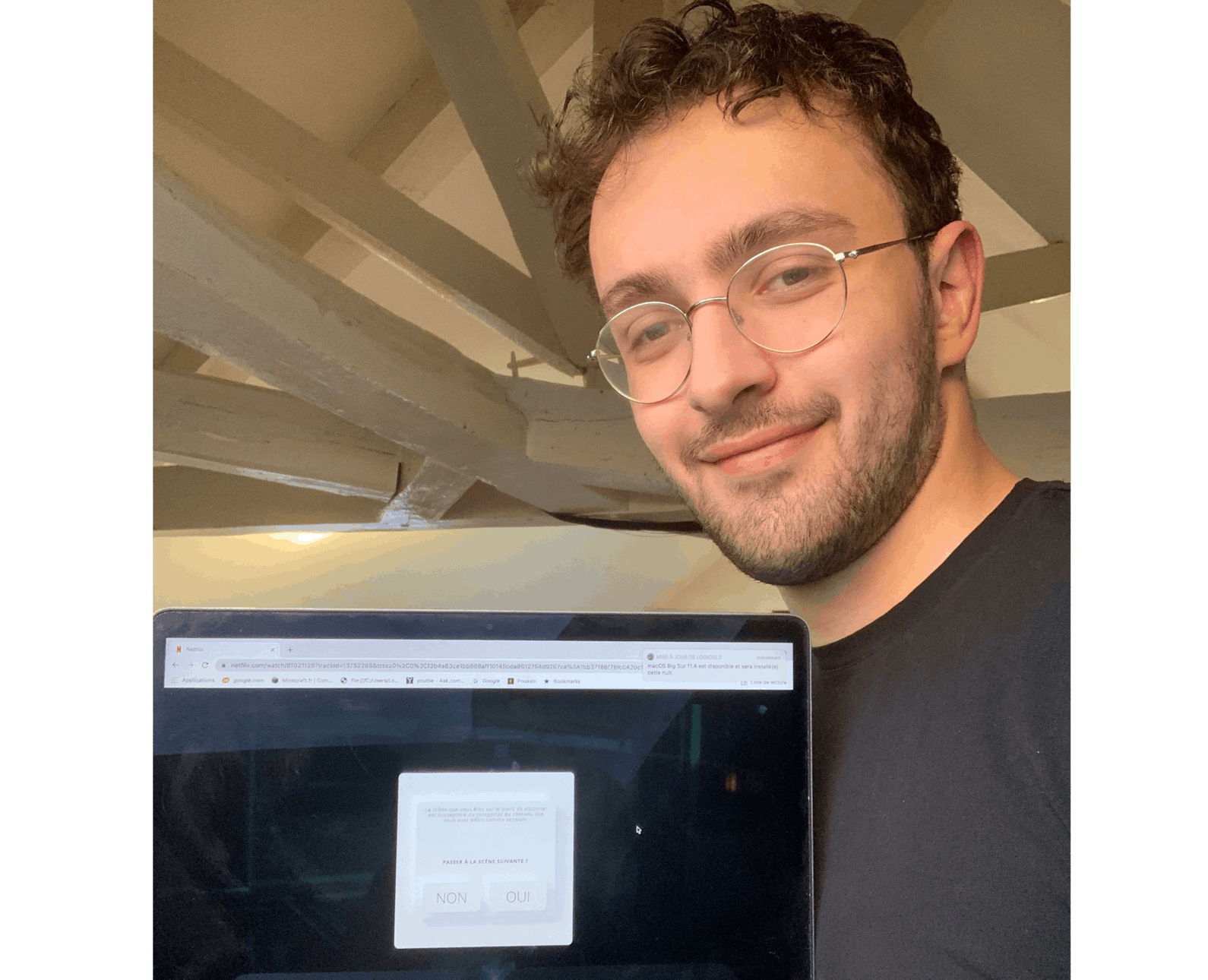Violence in films: a NEOMA student invents a warning system
Published on 07/19/2021
Thematics :


Violence in films: a NEOMA student invents a warning system
Published on 07/19/2021
For his Master 2 Management, Arthur Perry, a student at NEOMA, has created Triggerstop, a software program that provides alerts of potentially stressful scenes. Here’s how…
A violent scene in a film or television series. A suicide, a sexual attack, a weapon… Some people find these images unbearable: they reawaken traumas and cause severe crises of anxiety. This type of problem affects one person in ten over the course of their life. These are the viewers for whom Arthur Perry, a student on the TEMA programme at NEOMA, has developed the Triggerstop software. “It’s a web extension you add to search engines such as Google. At the moment it only works on Netflix because that is the largest provider of content,” the young man explains. It is available now on computers and by the end of the year will also be on smartphones and tablets.
Like Waze and Coyote, the warning system is community-based
 So, how does it work? The viewer enters into the software the content to which they are sensitive, such as ‘murder’, ‘razor blade’, ‘blood’ etc. Then, just before the unwanted content appears in a film or episode of a series, the interface blocks it from being broadcast. It gives the option of either watching the scene or skipping it and moving on to the next one. “Up to now, there were little ‘trigger warnings’ or icons indicating drugs or sex, but they weren’t specific enough.” To achieve this precision, the software relies on the participation of other viewers.
So, how does it work? The viewer enters into the software the content to which they are sensitive, such as ‘murder’, ‘razor blade’, ‘blood’ etc. Then, just before the unwanted content appears in a film or episode of a series, the interface blocks it from being broadcast. It gives the option of either watching the scene or skipping it and moving on to the next one. “Up to now, there were little ‘trigger warnings’ or icons indicating drugs or sex, but they weren’t specific enough.” To achieve this precision, the software relies on the participation of other viewers.
The system is in fact community-based like Waze or Coyote can be. Everyone can identify images that might be disturbing: when they appear, the user sends an alert by using the ‘trigger’ on the screen, and says how long the image is present. The software automatically creates an alert. Then all that’s left to do is to monitor the trolls who might interfere with the platform. “I will moderate it,” says Arthur Perry who intends asking for help if the project becomes more extensive
Triggerstop combines knowledge acquired at NEOMA
 The student first had the idea at the start of the 2020 academic year. After asking around, and discovering the extent of these post-traumatic or phobic problems, he saved up some money, then turned to the knowledge he had gained at the School. “Thanks to my design course at NEOMA, I was able to work on the graphic charter and draw up specifications,” explains Arthur Perry. “I knew the language of IT, so I was able to communicate with the developer. And I had a good understanding of project management.” For the moment, the economic model is based on the meagre costs paid by the student. Arthur Perry hopes it will be possible for his software to be free. By the beginning of July, it had been downloaded 200 times.
The student first had the idea at the start of the 2020 academic year. After asking around, and discovering the extent of these post-traumatic or phobic problems, he saved up some money, then turned to the knowledge he had gained at the School. “Thanks to my design course at NEOMA, I was able to work on the graphic charter and draw up specifications,” explains Arthur Perry. “I knew the language of IT, so I was able to communicate with the developer. And I had a good understanding of project management.” For the moment, the economic model is based on the meagre costs paid by the student. Arthur Perry hopes it will be possible for his software to be free. By the beginning of July, it had been downloaded 200 times.
